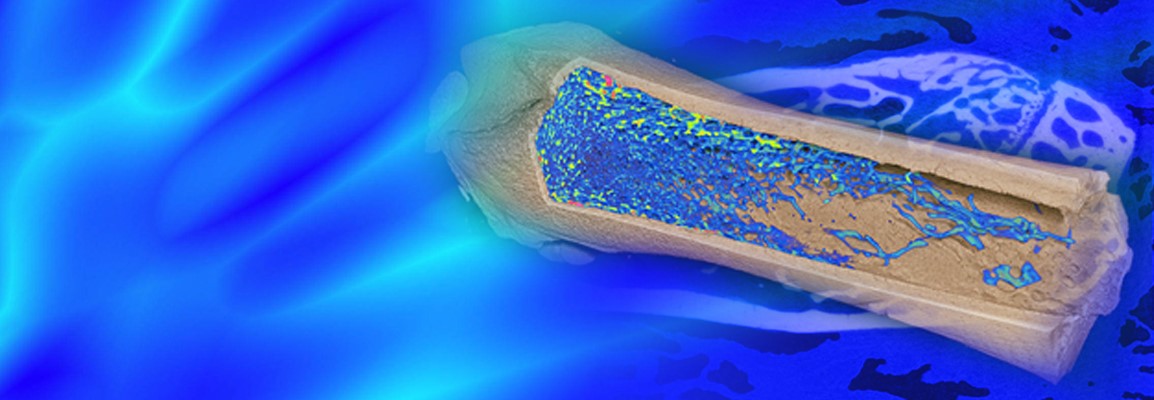

Using Micro-CT Imaging for the Phenotyping and Analysis of Bone Architecture
In this webinar, professor of musculoskeletal biology, Rob van 't Hof, will discuss the application of micro-CT for the analysis and phenotyping of bone. Most of the studies described will be ex vivo, but a few examples of in vivo micro-CT will also be given. Rob and team have used micro-CT to assess bone phenotype in transgenic mice, to test the efficacy of drugs targeting post-menopausal osteoporosis and to understand the bone condition Paget’s disease. For their studies, the team has used Bruker’s ex vivo SkyScan 1272 with automated sample loader as well as a SkyScan high resolution in vivo micro-CT.
What to Expect
Attendees will hear how micro-CT can be used to analyse mouse bone phenotypes and the bones’ response to osteoporosis drugs, as well as how to look in vivo at the bone changes that occur in mice with Paget’s disease over their lifespan. Automated analysis of the scans will also be discussed.
Key Topics
- How individuals working in biomedical and preclinical research can use high-throughput micro-CT for bone phenotyping and analysis of bone architecture
- Examples of studies looking at bone phenotyping, responses to osteoporosis drugs and Paget’s disease
- Techniques that have been developed to make processes run efficiently and automatically, whilst delivering reliable results
- Introduction to Bruker’s ex vivo SkyScan 1272 as well as a SkyScan high resolution in vivo micro-CT
Who Should Attend?
The webinar will interest researchers in the biomedical, medical, and preclinical world, including both experienced and novice users of instruments such as SkyScan. Anyone interested in applying micro-CT for preclinical or patient-based research in areas such as orthopedics, endocrinology, tissue engineering and forensics would benefit.
Speaker
Dr. Rob van ’t Hof
Professor of musculoskeletal biology
Rob van 't Hof is professor of musculoskeletal biology at the University of Liverpool. His main interest is the regulation of bone turnover, especially in relation to age related bone loss and bone disease. He has extensive experience in using µCT for phenotyping transgenic animal models of bone disease. Using these techniques, he has investigated the role of different nitic oxide synthases in bone, developed a mouse model of Paget's disease of bone and developed a novel class of anti-inflammatory drugs that also inhibit bone resorption. He has more than 10 years' experience in bone phenotyping of transgenic mice, and during this time has developed approaches for high throughput CT analysis. To complement the µCT analysis he has also developed software for semi-automated dynamic bone histomorphometry.
Selected Papers: 1. Daroszewska A, Rose L, Sarsam N, Charlesworth G, Prior A, Rose K, Ralston SH, van 't Hof RJ. Zoledronic acid prevents Pagetic-like lesions and accelerated bone loss in the p62P394L mouse model of Paget's disease. Dis Model Mech. 2018 Aug 23;11(9). pii: dmm035576. doi: 10.1242/dmm.035576. 2. Chau Y, Brownstein D, Mjoseng H, Perry P, Lee W, Berry R, Thornburn A, Sexton D, Hohenstein P, Morton N, Freyer E, Samuel K, van 't Hof RJ, Hastie N. Acute multiple organ failure in adult mice deleted for the developmental regulator, Wt1. PLoS Genet. 2011;7(12):e1002404. 3. Coste E, Greig IR, Mollat P, Rose L, Gray M, Ralston SH, van 't Hof RJ. Identification of small molecule inhibitors of RANKL and TNF signalling as anti-inflammatory and antiresorptive agents in mice. Ann Rheum Dis. 2015 Jan;74 (1) :220-6